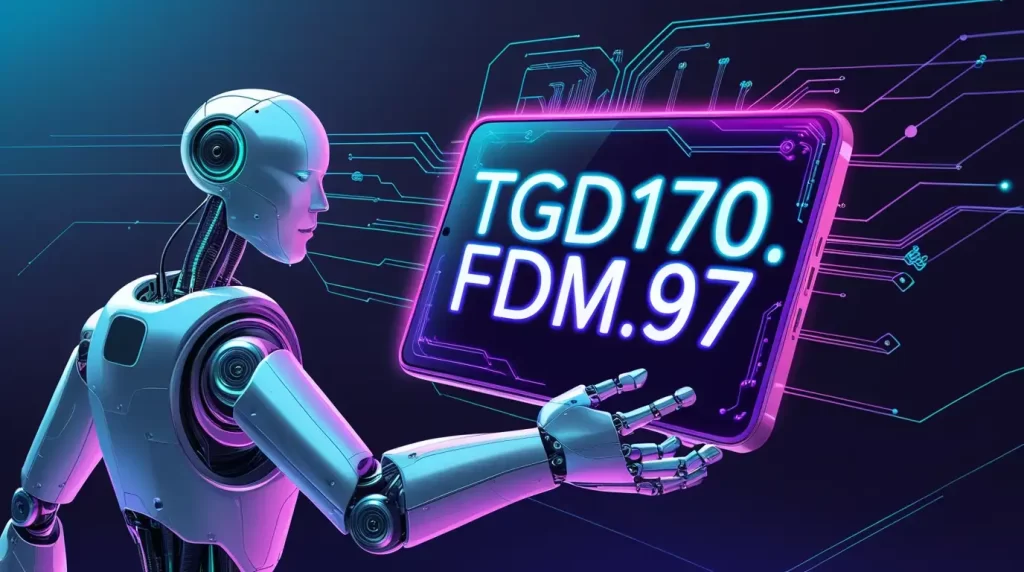In the fast-moving world of digital infrastructure, frameworks play an important role in helping organizations adapt to change. Among the many identifiers that represent structured systems, tgd170.fdm.97 has emerged as a fascinating framework. Unlike conventional tools that only focus on surface-level updates, tgd170.fdm.97 provides a foundation that allows systems to evolve efficiently without losing critical functionality.
This blog explores the unique concept of tgd170.fdm.97, its significance in modern technological environments, and how it can be applied across various scenarios.
What Is tgd170.fdm.97?
At its core, tgd170.fdm.97 represents a structured approach to system development and optimization. It is not a physical product or a single line of code; rather, it serves as a guideline that encourages adaptability. Think of tgd170.fdm.97 as a blueprint that ensures systems can transition from one stage to another without unnecessary complications.
While most frameworks either prioritize speed or stability, tgd170.fdm.97 balances both. It enables long-term scalability while maintaining operational integrity, making it suitable for enterprises that cannot afford downtime.
Why tgd170.fdm.97 Matters
The importance of tgd170.fdm.97 lies in its ability to streamline transformation. Every business today faces constant updates, whether in security patches, compliance requirements, or new user demands. Without a proper framework, these updates may disrupt workflows.
Here’s why tgd170.fdm.97 is considered valuable:
- Consistency: It prevents functionality loss during system upgrades.
- Efficiency: It reduces resource waste by aligning evolution with existing architecture.
- Scalability: It prepares systems for future needs without forcing complete overhauls.
- Resilience: It minimizes the risk of errors during transitions.
The Structure of tgd170.fdm.97
Though tgd170.fdm.97 may appear abstract, its structure can be understood through three layers:
- Foundation Layer: This ensures core stability so that critical features are never compromised.
- Adaptive Layer: This layer focuses on incremental adjustments, such as configuration changes or performance optimization.
- Evolution Layer: The final stage supports large-scale transitions, like moving to new platforms or architectures, without losing alignment with earlier processes.
This layered approach makes tgd170.fdm.97 particularly effective compared to rigid models.
Practical Applications of tgd170.fdm.97
The concept of tgd170.fdm.97 can be applied in a wide variety of industries:
- Software Development: Developers can use tgd170.fdm.97 to roll out new features while keeping older versions functional.
- Cloud Migration: Organizations moving to cloud infrastructure can rely on tgd170.fdm.97 to ensure seamless transition.
- Data Management: Large databases often require reorganization. With tgd170.fdm.97, data structures can evolve without major disruptions.
- Cybersecurity: As threats evolve, tgd170.fdm.97 provides a framework for updating defense systems without weakening existing protocols.
How tgd170.fdm.97 Encourages Efficiency
Unlike traditional methods that demand complete system replacements, tgd170.fdm.97 focuses on progressive change. This means:
- Less downtime during upgrades.
- Lower financial burden since resources are reused.
- Faster adaptability to market or regulatory demands.
By embedding adaptability into its framework, tgd170.fdm.97 reduces the risks typically associated with large transformations.
Challenges with tgd170.fdm.97
Although tgd170.fdm.97 offers many advantages, it is not without challenges:
- Complex Setup: Understanding its layered structure requires training.
- Integration Issues: Legacy systems may resist adaptation.
- Continuous Monitoring: To maintain efficiency, tgd170.fdm.97 requires active oversight.
Organizations adopting tgd170.fdm.97 must be prepared to invest in skilled teams who can manage and refine the framework.
Future of tgd170.fdm.97
As businesses demand faster innovation cycles, frameworks like tgd170.fdm.97 will become even more relevant. The trend is moving away from rigid systems toward flexible, evolutionary designs. In this sense, tgd170.fdm.97 aligns with the future by ensuring systems are not just updated but also prepared for continuous transformation.
We can expect tgd170.fdm.97 to influence areas like artificial intelligence integration, advanced cloud-native architectures, and adaptive cybersecurity measures.
Conclusion
In today’s digital landscape, adaptability is no longer optional—it is essential. tgd170.fdm.97 provides a structured yet flexible way for systems to evolve without losing their core functionality. Its layered design, efficiency, and scalability make it a strong candidate for organizations aiming to thrive in dynamic environments.
By adopting tgd170.fdm.97, businesses can ensure they are not only keeping pace with technological changes but also building resilience for the future.
